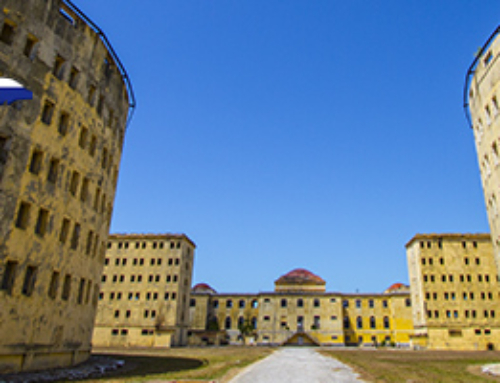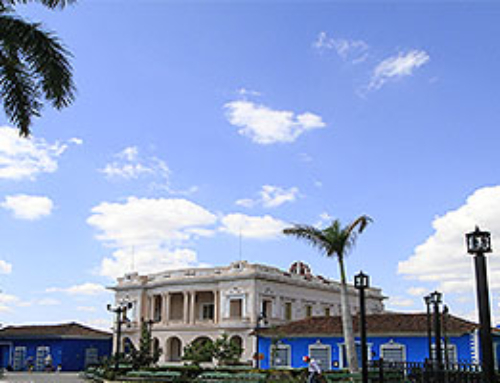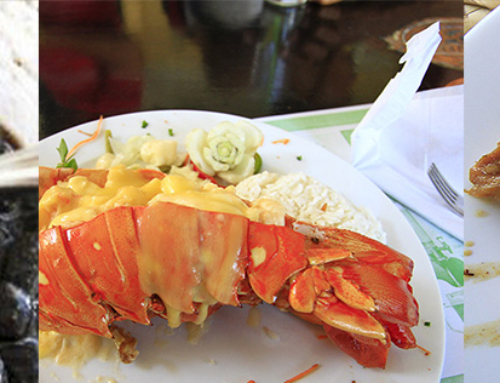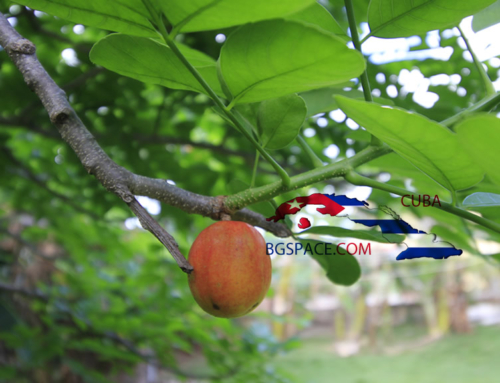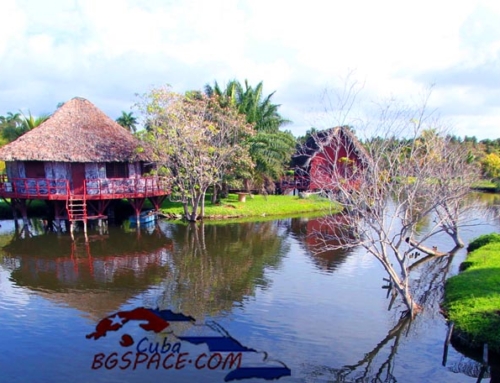Undoubtedly Cuba owes its vividness to its capital – Havana. Here you can see a bit of each Cuban city and town and more. The top 10 sights that are a MUST to visit in Havana, however, are:
- THE MALECON BOULEVARD OF HAVANA – in Cuba they call “Malecon” any boulevard or street along the sea coastline, where Cubans usually go walking, fishing, drinking rum, or simply to enjoy life.
Invalid Displayed Gallery
Almost every sea city in Cuba has a Malecon, but the Havana one in the biggest, the most extraordinary, and colourful. It is 7 km long, and Cubans like to joke that it is “the longest bench in the world”.
Invalid Displayed Gallery
The Havana Malecon starts from the 1830 restaurant – a place for passionate salsa parties. It curves its way eastward through the aristocratic Vedado, passing by the Riviera Hotel and the prominent Nacional de Cuba Hotel, through Street 23 all the way to Havana Bay – the city foundation point.
Invalid Displayed Gallery
During winter storms – without snow but with strong winds, they usually close half or the whole boulevard because of the big waves that overrun the concrete wall and often flood the nearby neighbourhoods. A lot of photographers are looking forward to this time of the year…
Invalid Displayed Gallery
2. CAPITOLIO
The imposing Capitolio is almost an exact copy of the American Capitol in Washington DC. Finished in 1929 the Capitolio housed the Parliament before the Revolution, and eventually the Cuban Academy of Sciences and several museums. An encrusted diamond lies under the Capitolio dome and helps measure the distance of the roads in the different cities and towns of Cuba.
3. THE REVOLUTION SQUARE AND THE JOSE MARTI STATUE
The huge socialistic square built by the dictator Batista later becomes a symbol of the Revolution. Every year on the 1st of May nearly 1 million people gather on a manifestation. Namely on this square, El Comandante Fidel Castro used to give his notable 4-5-hour speeches. Near the square, you can see the 112-metre high monument of Jose Marti – the highest monument in Cuba.
Under the monument, you will see the marble statue of the revolutionary and fighter for Cuban independence.
Nearby you will find all the important institutions and ministries with the images of the Cuban Revolution heroes Camilo Cienfuegos, Fidel Castro, and Che Guevara.
4. THE ALMENDARES PARK
The wonderful Almendares Park, though a bit unkept lately, houses the river of the same name, which divides Havana into Playa municipality and Vedado municipality. This is a wonderful place for walks and an escape for Havana citizens from the summer heat.
5. MARINA HEMINGWAY HARBOUR AND FUSTERLANDIA
Marina Hemingway Yacht Harbour built by the American mafia is the other face of Cuba. It is the biggest in Cuba and in recent years it has been sheltering more and more American yachts. It is kept by the State Company of Cubanacan.
There is a neighbourhood in Havana with colourful houses, mosaics, and drawings, which will take you back to childhood. And all of this thanks to Jose Fuster.
Jose Fuster was born in 1964 in Caibarien, Villa Clara Province, close to the Cayo Santa Maria resort in Cuba. “I am a man of the sea”, Fuster claims. “I come from a poor family. We lived on fishing.” At the age of fourteen, Fuster took part in the Cuban Literacy Campaign, which aimed at making the Cuban nation literate. The project was inspired by the Cuban Revolution, ignited by El Comandante Fidel Castro Ruz and Ernesto Che Guevara. Fuster used to teach Spanish in the remote areas of the Siera Maestra Mountain, where access to education is fairly limited. Later, Fuster graduated from the University of Havana in the field of Arts. His career as an artist dates back to 1966 up to the present day when Fuster boasts over 100 exhibitions and over 500 more in which he took part.
Fusterlandia is a result of Fuster’s development as an artist. “I used to work every day in order to create something spectacular”, he shares. “I wanted for my investigation to be my space for art. This has always been my illusion, my idea and it eventually happened. When I arrived here, my house was small and wooden”, Fuster remembers. “So I decided to do something about it. I started building my own dream.”
Fuster was inspired by the ideas of the great architects – Gaudi in Barcelona and Brancusi in Romania. He reveals that he invested his income from selling paintings and sculptures in his neighbourhood, where he reconstructed his neighbours’ houses including them in Fusterlandia. “This project doesn’t involve only my house, it spreads across my whole neighbourhood. My neighbours are wonderful people. Such an undertaking seemed impossible in Cuba, but with time all dreams are bound to come true.”
The roofs, walls, entrances, and benches around Fuster’s house – everything is decorated with colourful sculptures and mosaics, mermaids, fish, palm trees, roosters, santeria deities, and scenes with the heroes of the Cuban Revolution. More than 80 neighbours trusted their houses to Fuster as canvases. Some of his works in Fusterlandia are devoted to different nearby countries. Eventually, Saint Alexander Nevski and the Bulgarian Rose were included as a symbol of the Cuban-Bulgarian friendship thanks to the Bulgarian community and the Bulgarian embassy in Havana, who made it possible. Read here more about the Bulgarian traces in Cuba.
6. OLD HAVANA
Old Havana is an ABSOLUTE MUST! My suggestion is to start your tour from Capitolio, through the “birthplace” of the ” La Floridita” daiquiri, along the “Obispo” pedestrian street to the Old centre.
Invalid Displayed Gallery
Although a big part of the building facades in Old Havana is rather shabby or half-destroyed, especially towards lower Malecon and the Havana Bay, some large-scale renovation has been taking place here in recent years. Except for colonial buildings in Old Havana, you will see also the shady boulevard of Prado, where Cubans actively trade on real estate on Sundays, the magnificent theatre of Garcia Lorca, and others. The Old Square is completely renovated now, but back in time, it used to be a place for public executions or a slave market. I also wouldn’t miss visiting the Cathedral Square, the Weapons Square, as well as the San Francisco Square, located opposite the seaport Sierra Maestra.
Invalid Displayed Gallery
7. 5TH AVENUE
The 5th Avenue – the most glamorous and expensive boulevard in Havana, is a part of 7th Street and Malecon and starts from the Almendares River tunnel. It is 11 km long, it is wide and impressive, and with its palm trees and monuments all over it hosts all the diplomatic escorts in Cuba. Most of the embassies are situated on the two sides of 5th Avenue including one of the biggest in the world – the embassy of the Russian federation.
8. CALLEJON STREET
This is a place with exceptional spirit – you feel as if your gaze is drawing a picture for you… This is the street of the Cuban Afro culture.
Callejon de Hammel is not to be described – it has to be sensed. Everything here is engrossing…
The whole street is pure folklore. Everything is handmade – little chairs and tables, small parks, sculptures, and many more. The street often hosts expositions of famous local artists. Everything here is a symbol, especially the bongo and other percussion instruments sounds used to summon the orishas spirits /according to the local religion – Santeria/.
Here you can and will be kindly invited to buy musical disks of the local musicians, listen to Afro rumba live performances, and many more. This place is a MUST in my tours.
9. El MORRO FORTRESS
The guardian fortress of Havana is located on the other end of Havana Bay. To reach it you need to drive through the tunnel under the bay.
Once you get there you will see a wonderful view of Malecon, Old Havana, and Vedado. In the neighbouring fortress La Cabana fortress every evening you can watch the change of the guard and cannon salute, used in colonial times to signalize that they are closing the fortress gates so that all the farmers and wanderers could enter back the city.
10. HOTEL NACIONAL DE CUBA
This is the most famous hotel in Havanа и Cubа. It was officially opened on the 30th of December 1930. Built by the American companies McKim, Mead & White, and Purdy & Henderson Co the hotel used to be of the greatest significance for its time in the whole Caribbean region. Nacional de Cuba was the meeting point of the mafia bosses in December 1947 and therefore served as the perfect setting for the “Godfather” movie. The hotel lobby walls are decorated with photographs signed by all the important hotel guests: Churchill, Nelson Rockefeller, the great Frank Sinatra, Ernest Hemingway, Yuri Gagarin, Walt Disney, and others.
Nacional de Cuba is a part of a district known in the earlier ages of the colonial period as Monte Vedado (vedado from Spanish means “forbidden”). The reason for this is the decree from the Spanish government that forbids road construction to the beach in this district. This is why one of the conference halls in the hotel is called “Sala Vedado”. The unstopping pirate attacks during the colonial age, followed by the capturing of Havana by the English, lead to the construction of various fortifications, including the one of Santa Clara. The remains of this defense system are exposed in the hotel garden. There you will also enjoy a breathtaking view of Malecon and the Atlantic Ocean.


































